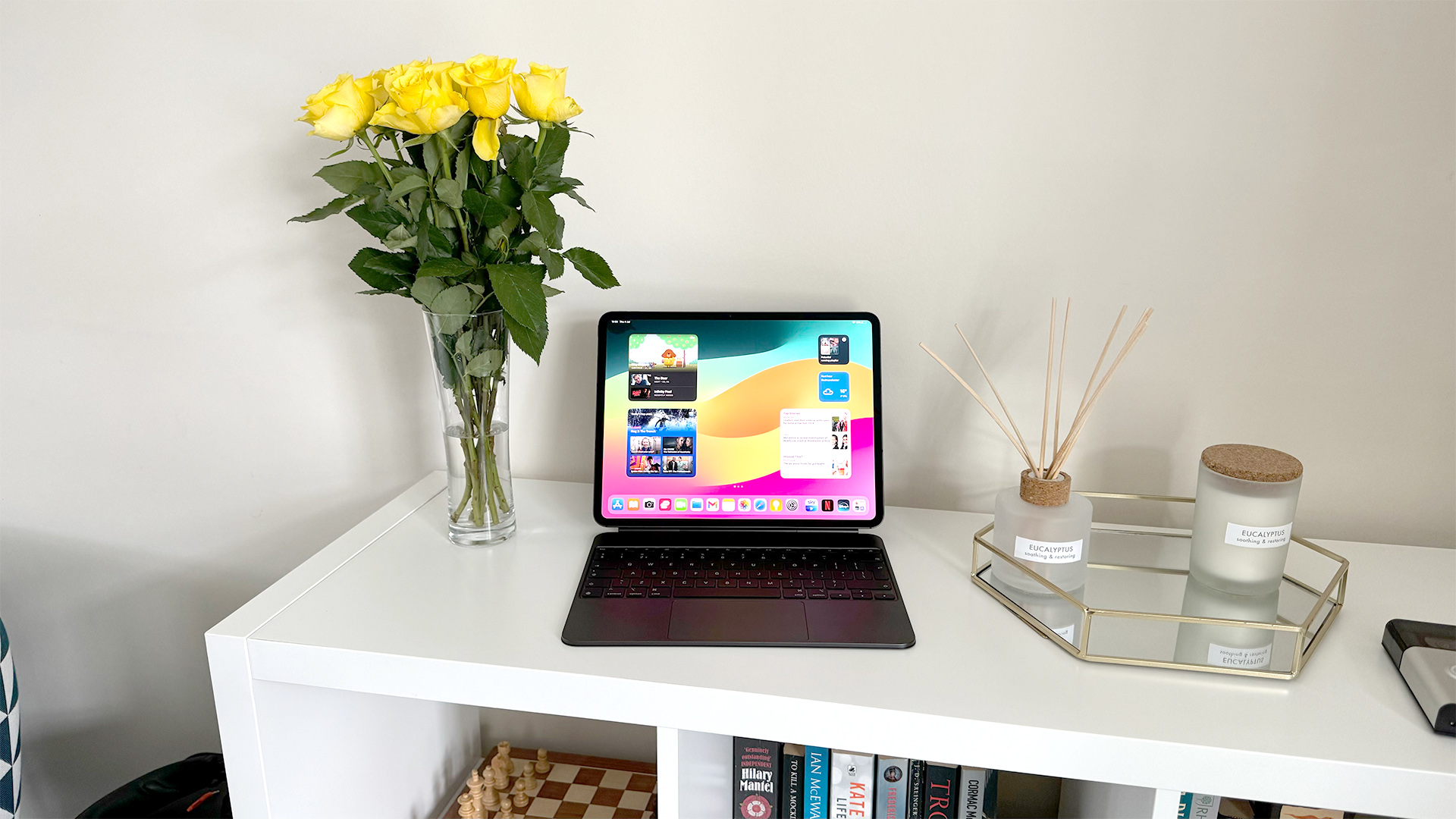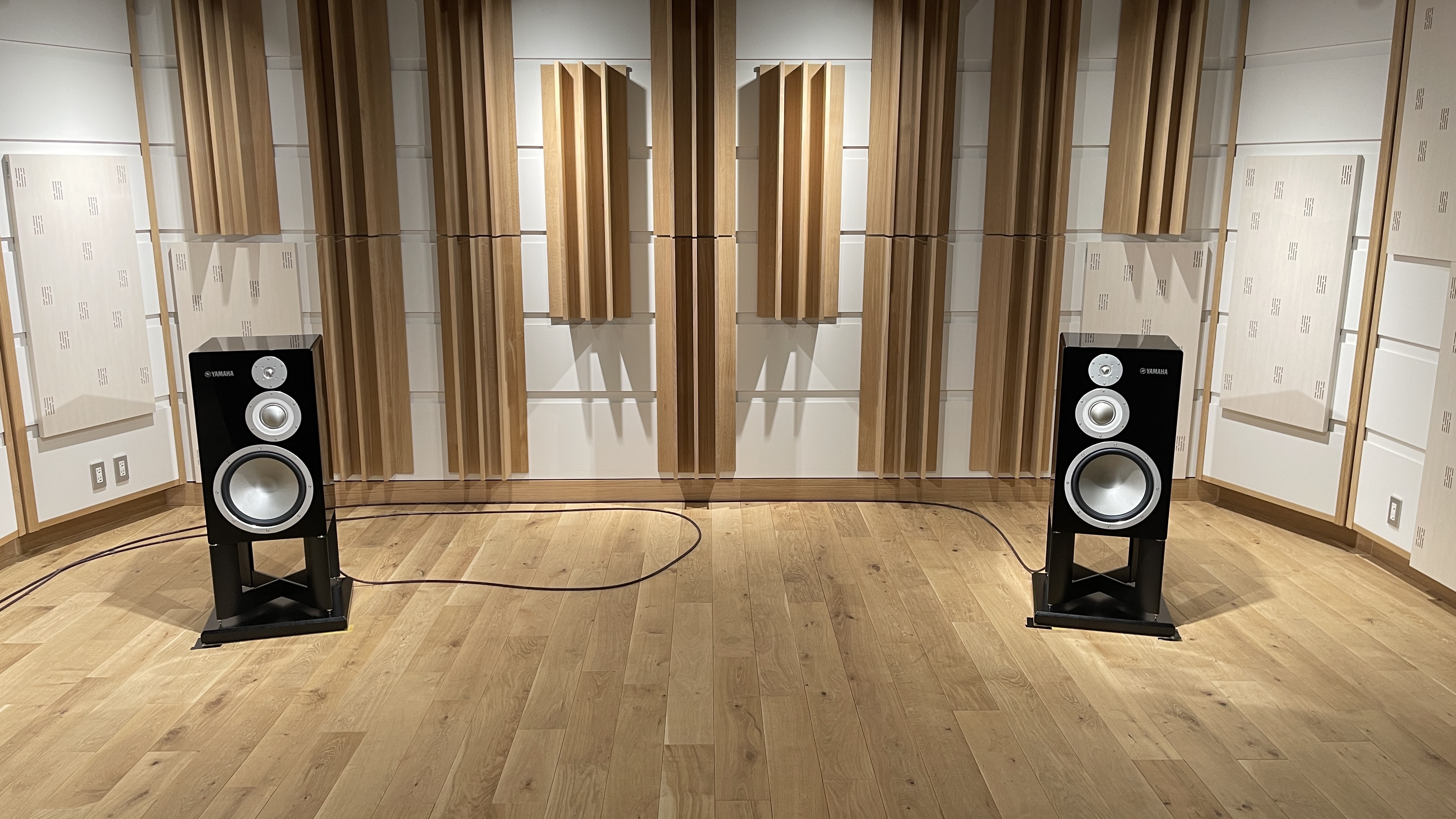What Hi-Fi? Verdict
It’s hugely over-powered for content consumption, but there’s simply no better way to watch movies on the move
Pros
- +
Awesome contrast
- +
Richly cinematic picture quality
- +
Superb sound
Cons
- -
Over-powered for movies and music, so you’re potentially paying for specs you don’t need
Why you can trust What Hi-Fi?
The largest iPad Pro has long been a brilliant but hugely extravagant way to watch movies on the move, and that theme is taken to the next level by the new model. Arguably the biggest news from the launch event for the new iPad Pro was the announcement that it would feature a new M4 processor, essentially meaning that the iPad would surpass Apple’s MacBooks in terms of power – if only temporarily.
For us, though, the much bigger news was that the new Pro would be the first iPad with an OLED screen, potentially opening the door to a big upgrade in picture performance. Having finally laid our hands on a sample and put it through its paces over several days, we can confirm that, while owners of the previous iPad Pro 12.9-inch model shouldn’t feel the need to instantly throw it in the bin, the new 13-inch OLED iPad Pro is undeniably the new benchmark for movie-watching on the move.
Price
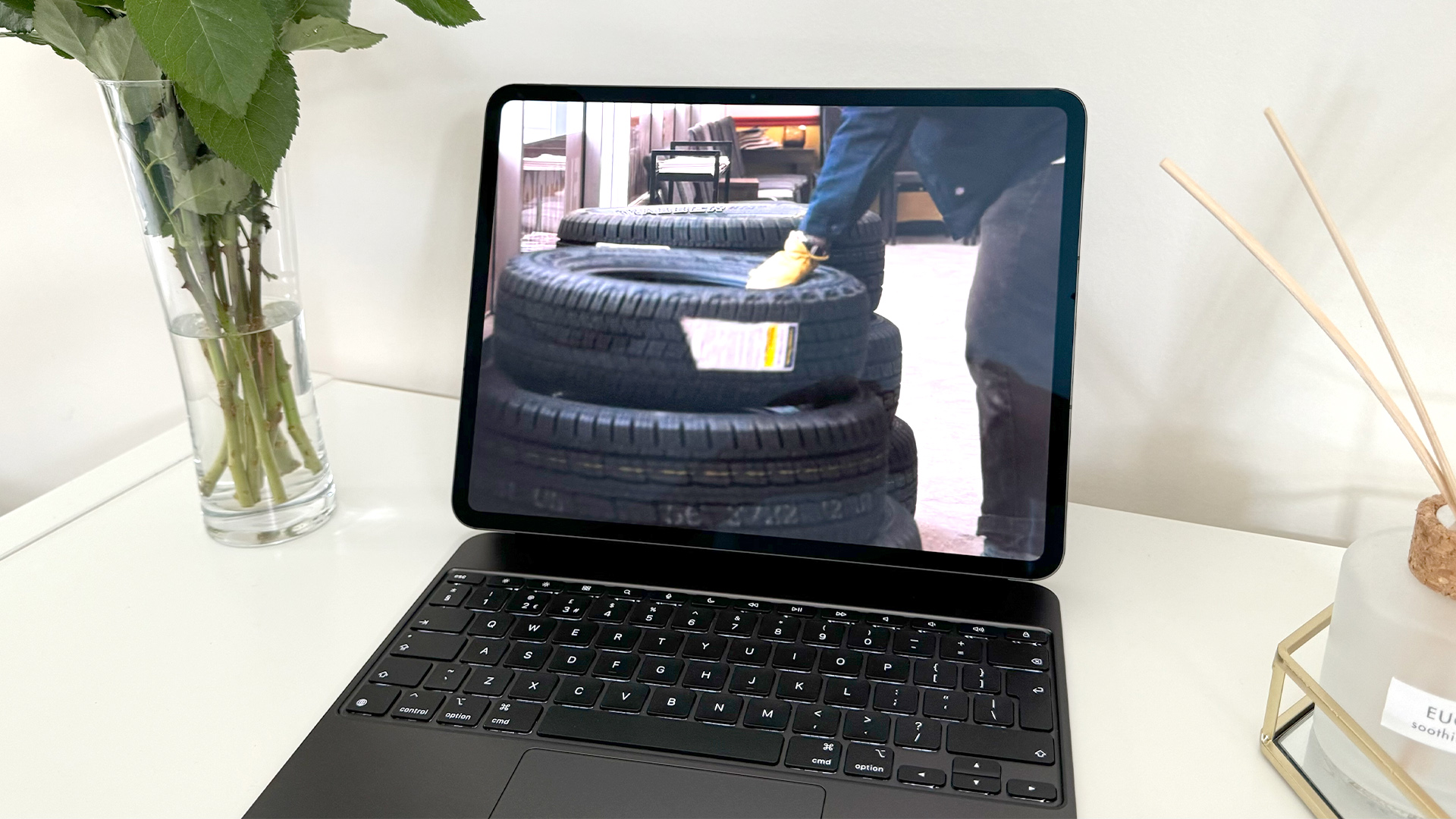
The new iPad Pro 13-inch will set you back £1299 / $1299 / AU$1699. That’s a pretty big increase on the outgoing iPad Pro 12.9-inch, which launched at £1249 / $1099 / AU$1899. Apple will of course point to the big increase in power and the switch to OLED as the key reasons for the price rise, as well as the fact that the entry-level version now has 256GB of storage rather than the 128GB of before. You can of course buy a version with more storage (256GB, 1TB and 2TB versions are available), but the prices are pretty eye-watering.
Adding cellular support costs extra, of course – an additional £200 / $200 / AU$350 – and if you then add the new Apple Pencil Pro (£129 / $129 / AU$219) and lovely new Magic Keyboard (£349 / $349 / AU$579), your bank balance is going to feel significantly lighter.
Interestingly, the iPad Pro is no longer the only way to get a super-sized iPad. You can now buy a 13-inch version of the iPad Air for a starting price of £799 / $799 / AU$1299, though that does without the new Pro’s OLED display. We look forward to putting the 13-inch Air through its paces soon.
Design
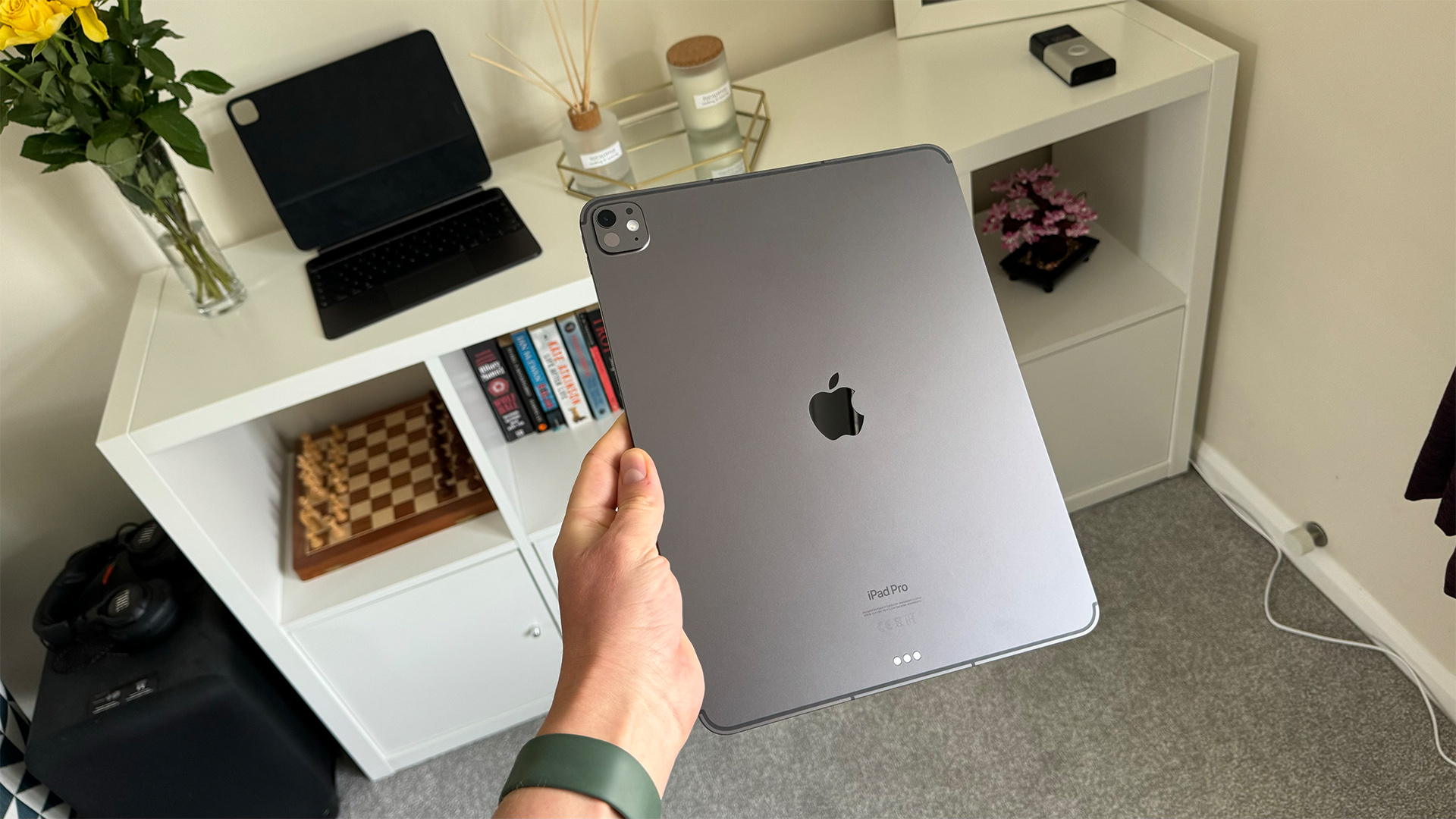
While the screen has increased in size by 0.1 of an inch, the new iPad is (if held in landscape) only 1mm wider and 0.6mm taller than the model it replaces. What’s more noticeable is that it’s thinner by 1.3mm, making the tablet just 5.1mm thick in total. In fact, that makes the new iPad Pro the thinnest product Apple has ever made, which is really quite something. It’s lighter than the previous model, too, by a not-insignificant 100g.
Otherwise, this very much looks like the iPad Pros that have gone before it. There’s about 1cm of black frame around the screen, which at this stage it would be nice to be rid of, but overall there’s very little to complain about. This is a hugely well-made and premium-feeling device that is a pleasure to possess. It is, though, very large for a portable device and therefore better suited to a long-haul flight and/or movies in bed than it is to bus and tube journeys.
One very neat but near-invisible touch is that the front-facing camera has finally been moved to one of the long edges, which means it’s in the centre when you are making a video call in landscape mode. It took far too long for this change to be made, but it has at least finally happened.
Features
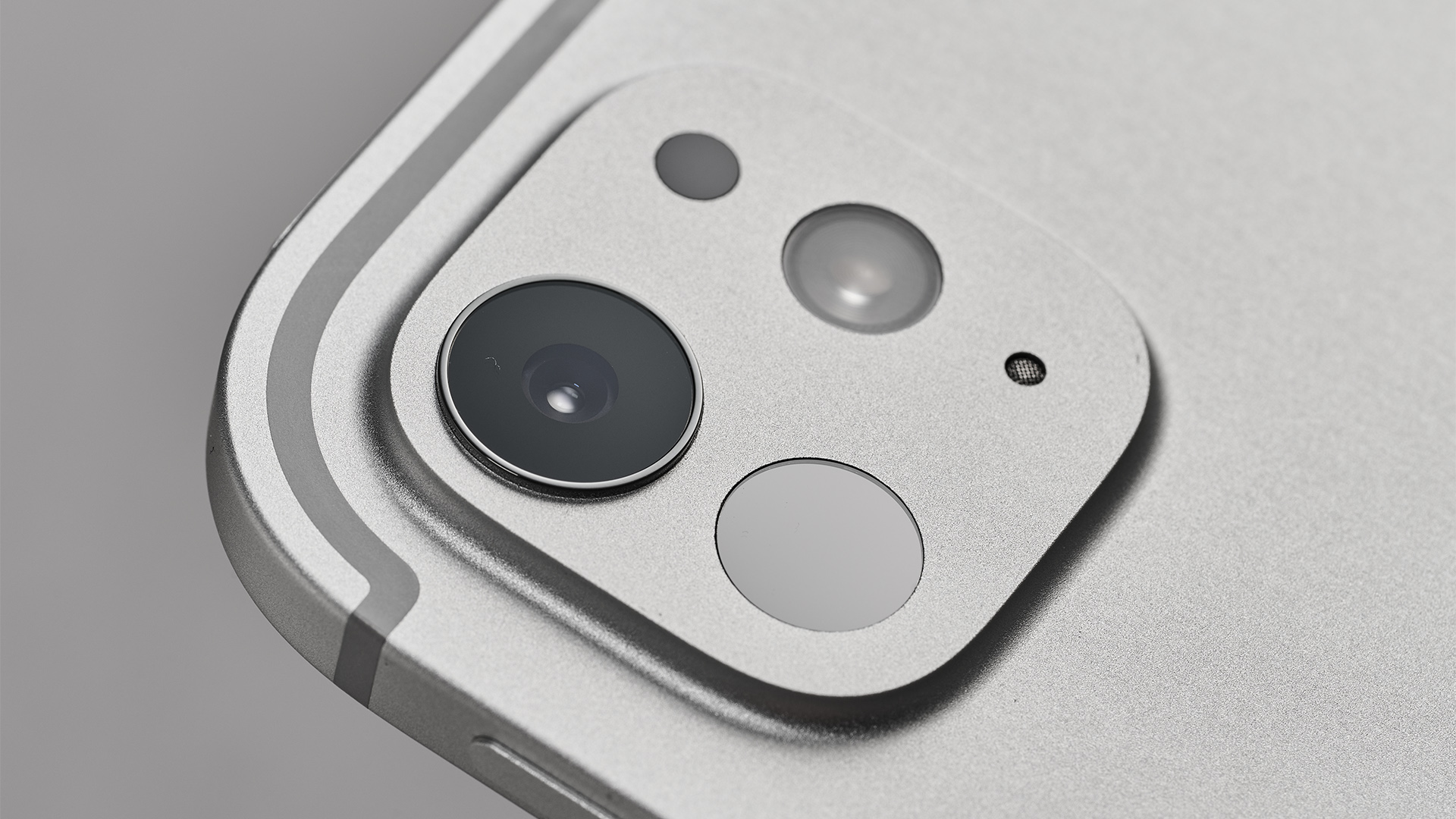
The switch to OLED was also a long time coming, but it, too, is finally here. And this is no typical OLED display, either: presumably determined to ensure that the change of display technologies didn’t result in any specification drop, Apple has given the new iPad Pro a ‘tandem OLED’ display that combines two OLED panels so that it offers all of the benefits of OLED (most importantly, the pixel-level contrast control and perfect blacks) while still matching the previous Mini LED display for brightness. So, according to Apple, the new iPad Pro is still able to hit 1600 nits with HDR highlights and 1000 nits of full-screen brightness. It can now hit 1000 nits with SDR content, too, whereas the previous model was limited to 600 nits with such content.
Resolution has increased slightly for the new iPad Pro, but this is only so that the previous pixel density of 264ppi can be maintained on the slightly larger display.
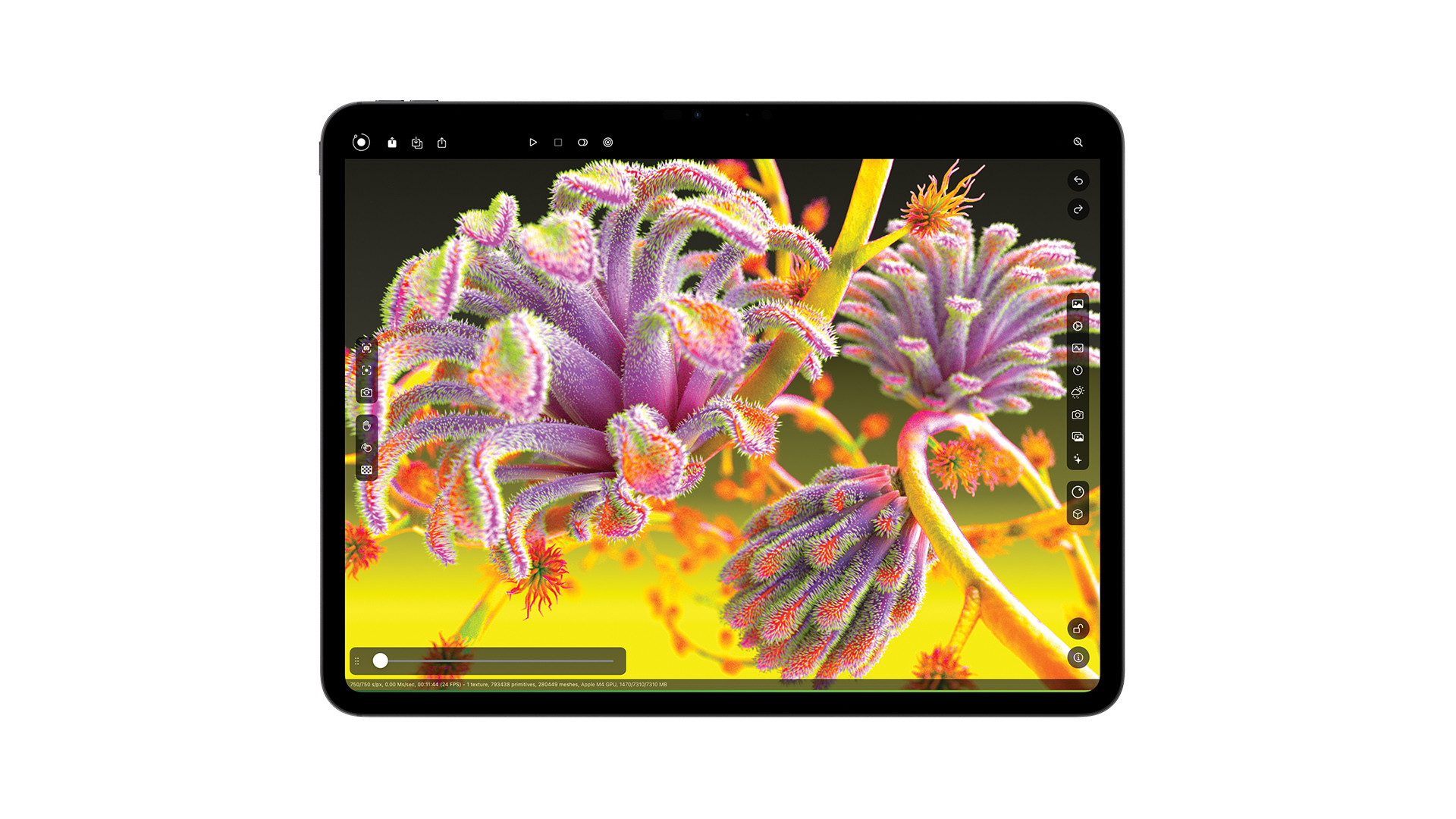
Screen size 13 inches
Resolution 2752x2064 (264ppi)
Storage 256GB / 512GB / 1TB / 2TB
Finishes x 2
Battery life 10 hours
Cameras 12MP on rear / 12MP ultra-wide on front
Dimensions (hwd) 28 x 21 x 0.5cm
Weight 579g
According to the specs, nothing has changed on the audio front. Like the previous model, the new iPad Pro has two speakers on each of its shorter edges. It’s easy to cover these when holding the tablet in landscape mode, but you will hopefully be using headphones for any serious listening anyway. Speaking of which, there is of course no headphone socket on the new iPad, so you will need to buy a USB-C headphones adapter if you want to use wired headphones.
The iPad Pro has long been overkill in terms of power, but for the new model to skip the M3 chip and go straight to a new M4 processor is still a big deal. Apple suggests in its own literature that this is necessary in order to power the ‘precision, colour and brightness’ of the new tandem OLED display. It also, of course, brings with it a general leap in processing power. We suspect that most owners – particularly those most concerned with movie-watching – never get close to hitting the limits of their iPad Pro’s capabilities, and even more potential will be untapped with this generation. To a select few who do use their iPad Pro for professional purposes, all of that extra power may well be useful. They may even feel that it’s worthwhile going for the 1TB or 2TB version, which has a processor with an extra performance core and double the RAM of the smaller-capacity versions.
Those pro users will also probably be interested in the new Apple Pencil Pro and/or the new Magic Keyboard. The former features new gestures that allow for even greater granularity when using the iPad for writing or drawing, while the latter features an even smarter design, a larger touchpad and a row of shortcut keys at the top. While the iPad with a Magic Keyboard still isn’t really a fully functioning laptop replacement, it is lovely to type on. In fact, this very review was written on our sample.
Picture
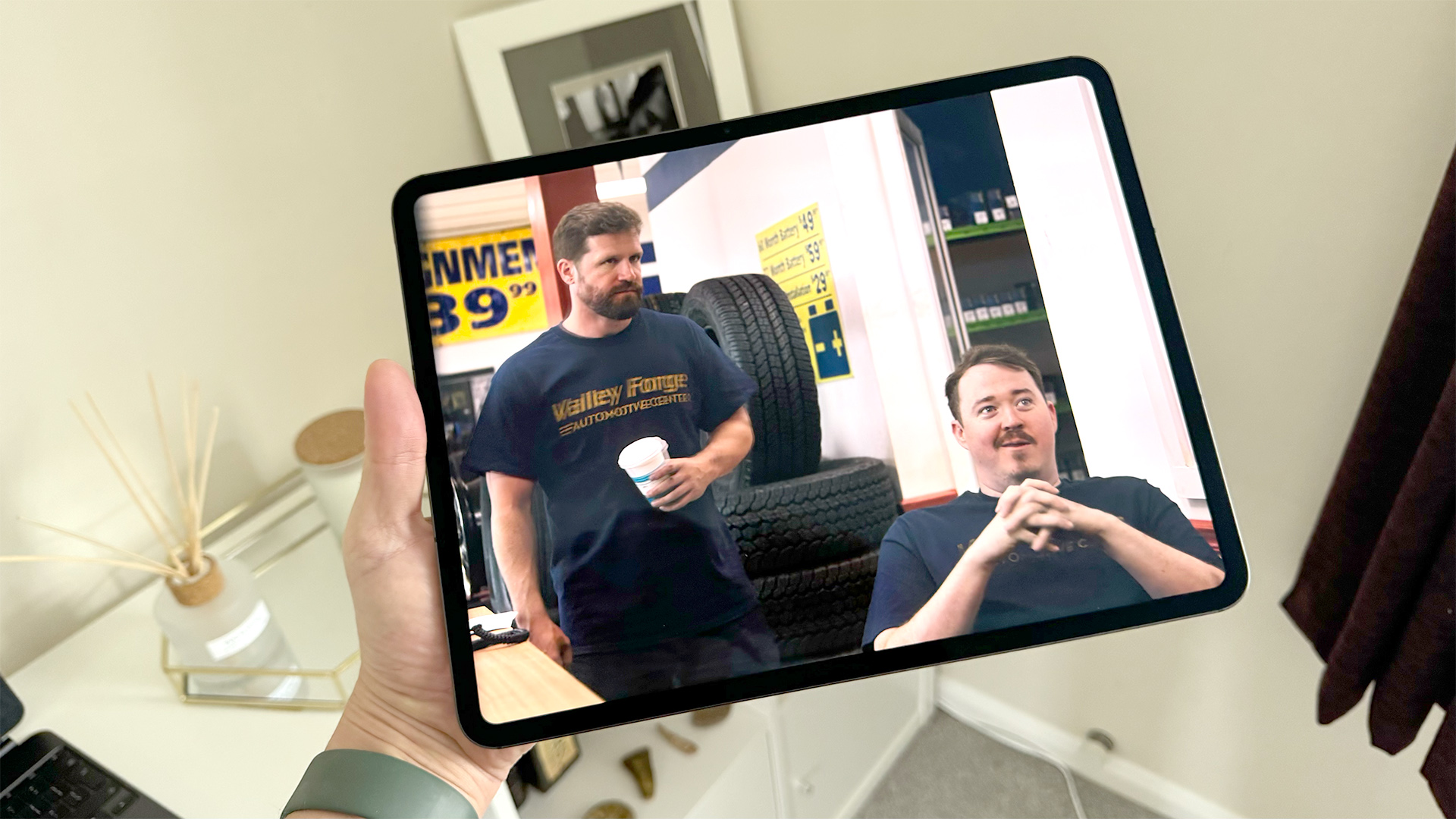
Really, though, we’re interested in the iPad as a movie and music player rather than a productivity device, and in this regard it doesn’t disappoint.
Playing Napoleon from Apple TV+, the new iPad Pro’s warmer tonal balance is clear to see, and it gives its reproduction a more cinematic feel. There’s a real Panasonic OLED vibe to the character of the delivery, and anyone who is familiar with Panasonic OLEDs or their reputation within the movie industry will understand what a compliment that is.
The previous iPad Pro was an accomplished handler of motion, yet the new model is much better in this regard. OLED is inherently far more responsive than LCD technology, and you can see that in the constant crispness of the delivery, particularly in fast, unpredictable motion.
It was always quite hard to see blooming on the iPad Pro 12.9-inch, but in extreme circumstances – such as the small, bright white text at the start of Blade Runner 2049 – it was there, manifesting as a faint glow around the words. That is not an issue for the OLED model, which uses its pixel-level contrast control to ensure that the text is perfectly white but the space immediately adjacent is perfectly black.
The new iPad Pro doesn’t actually look quite as bright to the naked eye as the older model. We suspect that might be down to the differences in colour temperature, with the previous model’s cooler tone making highlights look a little more zingy. This isn’t an issue for the OLED iPad anyway, as its highlights combine with even deeper blacks to produce overall greater contrast. This has benefits right across the picture, most notably in terms of increases in perceived sharpness and three-dimensionality.
Those super-deep OLED blacks thankfully don’t crush shadow detail. On the contrary, we find that we’re able to see a little more of the fine detail of Sapper Morton’s dingy farm in Blade Runner 2049 – though not to the extent that we feel we’re being shown things that were meant to stay hidden.
All told, this is a spectacular picture performance that combines pop and dynamism with superb subtlety and cinematic richness, resulting in a portable movie experience that is a match for the best home cinema displays.
Sound
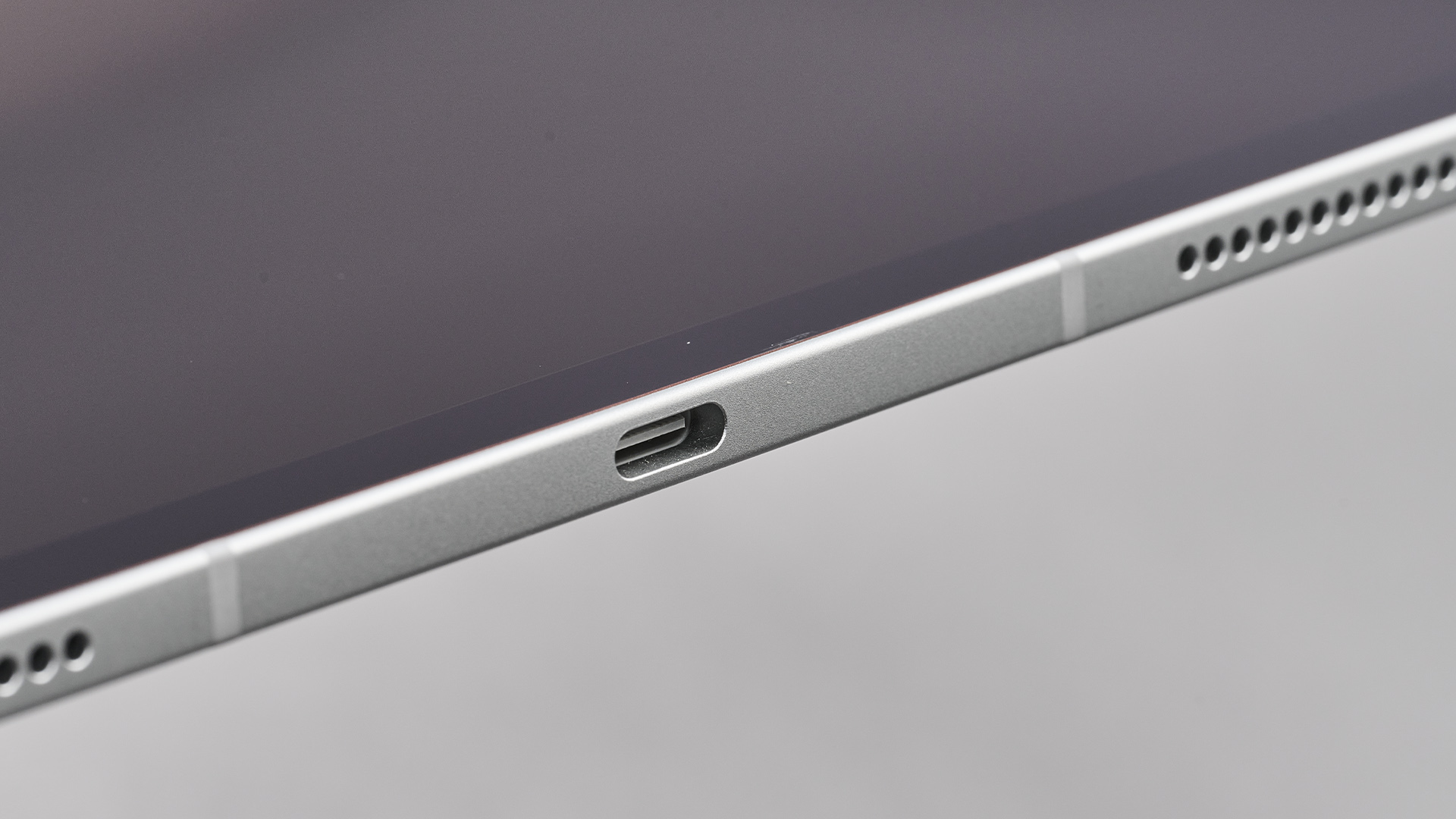
Apple often hides subtle sonic improvements in each new iPad and iPhone generation, but when listening via speakers there’s almost nothing to separate the outgoing iPad Pro 12.9-inch and the new 13-inch model. That’s no bad thing, though – so long as you avoid accidentally covering the speakers with your hands, they produce a surprisingly open and spacious sound with excellent central clarity, which means voices are always easy to understand.
Inevitably, given the size of the speakers, the iPad can’t produce terribly deep bass, but there’s a very good overall tonal balance and it does at least hint at the super-deep bass at the start of chapter two of Blade Runner 2049 while remaining totally in control and distortion-free. It’s clear that Apple understands the limitations of the iPad’s tiny speakers and has tuned the sound to perform just within them.
Connect a pair of capable wired headphones to the new 13-inch iPad Pro and there is in fact an extra bit of warmth, richness and weight to the delivery compared with that of the previous model. Thankfully, this extra little bit of refinement hasn’t robbed the delivery of its impact, dynamics or general intensity, so it’s good news all round for those who use their iPad for music.
For movies, it’s well worth investing in a pair of AirPods for the Spatial Audio that is then unlocked. While extravagant, the AirPods Max elevate the iPad’s cinematic chops to frankly amazing levels and make a long-haul movie marathon a thing of genuine joy.
Verdict
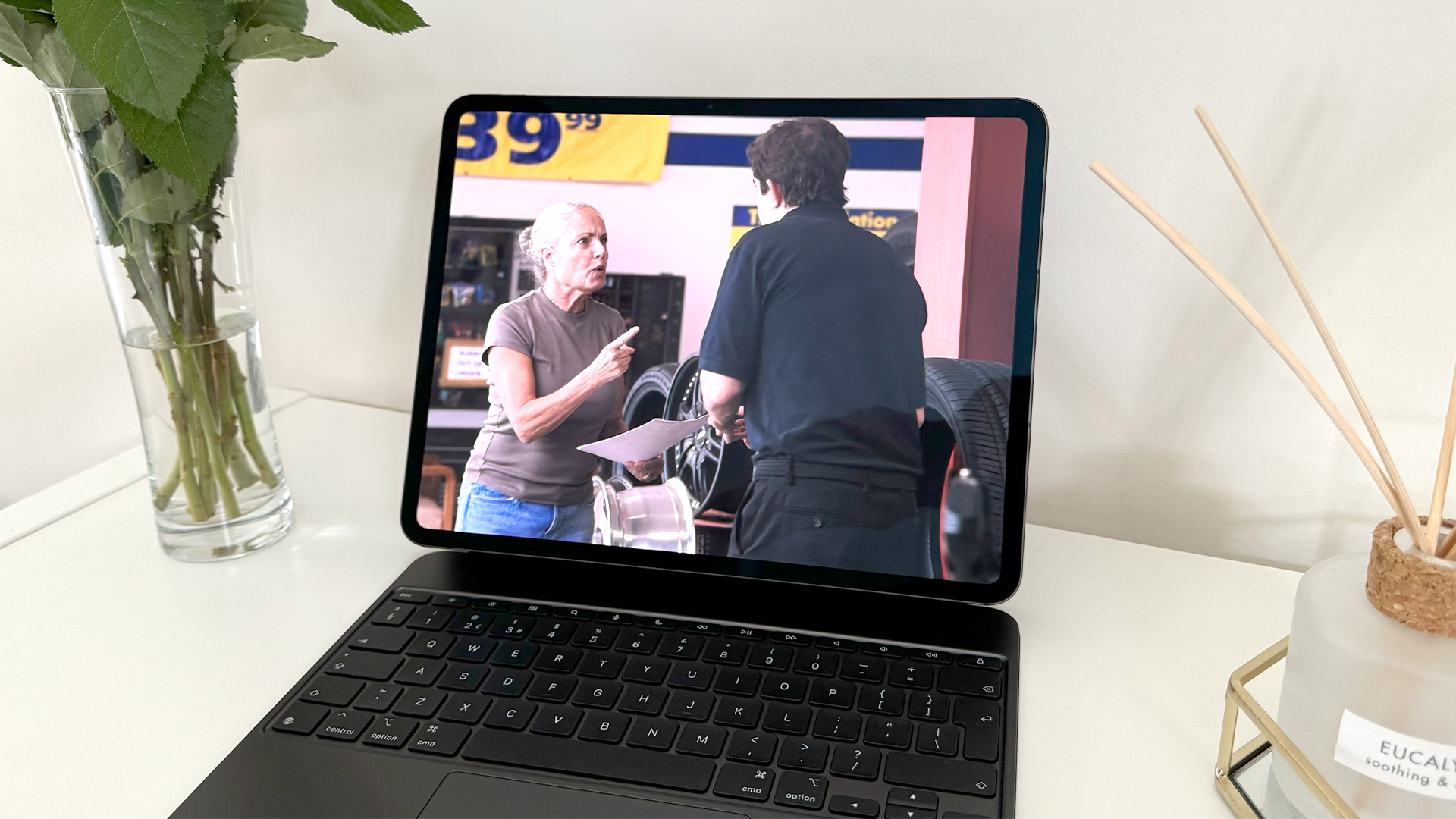
Apple had achieved a great deal with its Mini LED displays, to the extent that we weren’t sure whether the move to OLED would be that significant. Well, it is. Not only does the new iPad Pro boast even better contrast than its predecessor, it also adds richer colours, a more cinematic tone and even better motion.
Sure, it’s overkill in terms of processing power, particularly if you’re wholly or mainly going to use your tablet for movies and music, but if you have the luxury of a large budget, the new iPad Pro 13-inch is irresistibly good.
Review published: July 2024. Review updated: November 2024.
SCORES
- Picture 5
- Sound 5
- Features 5
MORE:
Here's our review of the previous iPad Pro 12.9-inch
What Hi-Fi?, founded in 1976, is the world's leading independent guide to buying and owning hi-fi and home entertainment products. Our comprehensive tests help you buy the very best for your money, with our advice sections giving you step-by-step information on how to get even more from your music and movies. Everything is tested by our dedicated team of in-house reviewers in our custom-built test rooms in London, Reading and Bath. Our coveted five-star rating and Awards are recognised all over the world as the ultimate seal of approval, so you can buy with absolute confidence.
